Address
304 North Cardinal
St. Dorchester Center, MA 02124
Work Hours
Monday to Friday: 7AM - 7PM
Weekend: 10AM - 5PM
Address
304 North Cardinal
St. Dorchester Center, MA 02124
Work Hours
Monday to Friday: 7AM - 7PM
Weekend: 10AM - 5PM
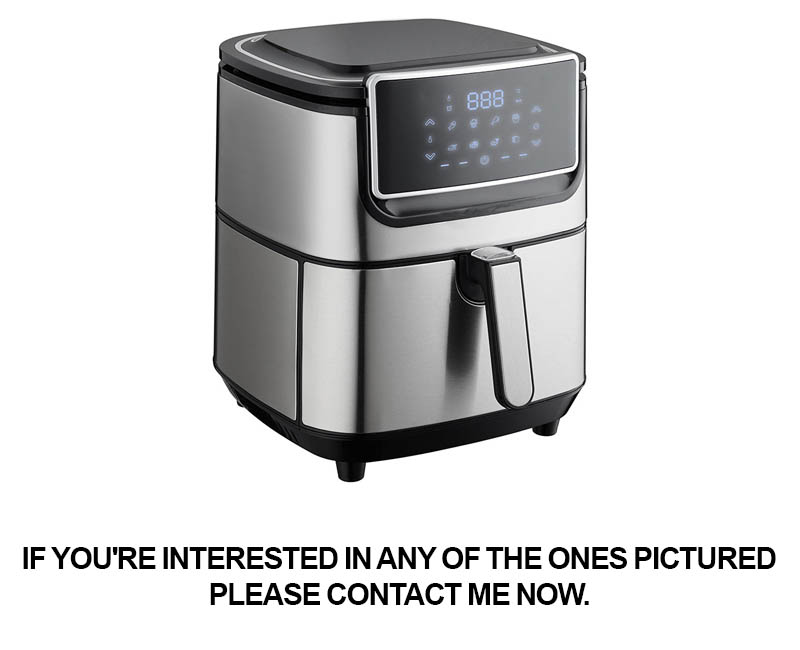
In recent years, the kitchen appliance industry has witnessed a surge in innovation and technological advancements, reshaping the way we approach culinary tasks. As consumers, we’re now spoilt for choice with a plethora of options that promise efficiency, convenience, and style. This article delves into the impact of ETL certified appliances, exploring how they are revolutionizing the kitchen industry and enhancing our daily lives.
The surge in the popularity of ETL listed commercial units in the kitchen appliances sector is a testament to the evolving needs and expectations of both businesses and consumers. As the commercial kitchen industry continues to grow, these units have emerged as a beacon of quality, safety, and efficiency. Here’s a closer look at the factors that have propelled the rise of ETL listed commercial units.
Firstly, the demand for high-quality, durable appliances has never been greater. With the rise of fine dining and the expansion of food service operations, commercial kitchens are now expected to operate at peak performance 24⁄7. ETL listed units have gained a reputation for their reliability, ensuring that they can withstand the rigors of continuous use without compromising on performance.
Secondly, safety is paramount in the kitchen, and ETL certification is a clear signal to operators that the units meet stringent safety standards. ETL (Electrical Testing Laboratories) is a respected testing and certification organization that ensures products are safe for use in commercial settings. This certification is not just about meeting safety regulations; it’s about giving peace of mind to kitchen staff and patrons alike.
Innovation plays a significant role in the adoption of ETL listed commercial units. The industry is witnessing a surge in smart kitchen technology, and ETL certified appliances are often at the forefront of these advancements. Features like energy efficiency, remote monitoring, and automated controls are becoming standard, and ETL listed units are often the first to integrate these innovative solutions.
Another driver in the rise of ETL listed commercial units is the increasing importance of energy management in commercial kitchens. With the growing awareness of sustainability and environmental impact, businesses are looking for ways to reduce their carbon footprint. ETL listed appliances are not only energy-efficient but also come with certifications that validate their green credentials, making them an attractive choice for eco-conscious operators.
Moreover, the diversity of ETL listed units is expanding, catering to a wide range of kitchen applications. From commercial ranges and fryers to ventilation systems and dishwashers, the selection of ETL listed products is vast and continues to grow. This variety allows commercial kitchens to find solutions that are tailored to their specific needs, whether it’s for a bustling restaurant, a busy café, or a small catering operation.
The trend towards modular and compact kitchen designs has also contributed to the popularity of ETL listed commercial units. In spaces where every inch counts, these units offer flexibility and adaptability, ensuring that they can be integrated seamlessly into any kitchen layout. This is particularly appealing to operators who are renovating or setting up new kitchens with limited space.
The competitive landscape is also a factor in the rise of ETL listed commercial units. As the market becomes more saturated with options, consumers are gravitating towards brands that offer a level of assurance that only certifications like ETL can provide. This has created a virtuous cycle where brands that invest in ETL certification see increased sales and market share, further solidifying the position of ETL listed units.
Furthermore, the global market for commercial kitchen appliances is witnessing a surge in cross-border operations. As businesses expand internationally, they need to ensure that their equipment complies with various safety and performance standards. ETL listed units provide a universal benchmark that is recognized worldwide, making them an ideal choice for multinational corporations.
The rise of ETL listed commercial units in the kitchen appliances sector is not just a trend; it’s a reflection of the industry’s commitment to excellence. As businesses continue to seek out the best in commercial kitchen solutions, the presence of ETL certification on a product label will likely remain a key differentiator in the marketplace.

ETL certification stands as a beacon of quality and safety in the commercial kitchen appliance industry. Its significance cannot be overstated, as it serves as a vital assurance for both manufacturers and consumers.
The Electronic Testing Laboratory (ETL) is an independent, third-party certification organization that ensures products meet the stringent safety and performance standards required by regulatory bodies. This certification process is rigorous, involving extensive testing and verification that spans various aspects of the product, from design to manufacturing and final assembly.
When a kitchen appliance is ETL listed, it means that it has been thoroughly inspected and tested to comply with a wide range of safety standards. These standards can include electrical safety, fire protection, energy efficiency, and more. By adhering to these standards, ETL listed commercial units offer a level of reliability that is often missing in appliances without such certification.
The significance of ETL certification is multifaceted. For manufacturers, it provides a competitive edge in the marketplace. Consumers are increasingly seeking out products that have been certified by reputable organizations like ETL, as they offer a sense of peace of mind. By showcasing the ETL logo on their products, manufacturers can attract customers who value safety and quality.
On the consumer side, ETL certification serves as a trust signal. It means that the appliance has been tested by a neutral, independent entity, ensuring that it meets certain benchmarks for safety and performance. This can be particularly reassuring for businesses investing in commercial kitchen appliances, as it mitigates the risk of equipment failure or accidents due to substandard components.
One key aspect of ETL certification is its adherence to international and national standards. These can include standards set by organizations such as the International Electrotechnical Commission (IEC), the Underwriters Laboratories (UL), and the National Electrical Code (NEC). By meeting these standards, ETL listed appliances are not only safer but also more compatible with different regions and their regulatory requirements.
Moreover, ETL certification can also lead to cost savings. While obtaining certification may involve upfront expenses, it often results in reduced insurance premiums for manufacturers. It can also minimize the risk of recalls or product liability lawsuits, as certified products are less likely to pose safety hazards.
For commercial kitchen operators, the significance of ETL listed appliances is clear. They need to ensure that their equipment is not only efficient but also safe, especially in environments where food safety is paramount. ETL listed appliances can help operators meet health codes and regulatory requirements, thereby avoiding potential fines and legal issues.
The certification process also encourages manufacturers to improve their products continuously. By subjecting their appliances to rigorous testing, they are forced to address any potential flaws or weaknesses, leading to better-designed and more reliable products.
Furthermore, ETL certification promotes global trade. Products that bear the ETL logo can often be exported more easily, as they meet the safety standards of multiple countries. This opens up new markets for manufacturers and can lead to increased sales and growth.
In summary, ETL certification is a critical factor in the commercial kitchen appliance industry. It ensures that products are safe, reliable, and compliant with international and national standards. For manufacturers, it offers a competitive advantage and cost savings, while for consumers and operators, it provides peace of mind and a higher level of product quality. The significance of ETL certification is undeniable, as it continues to shape the landscape of the commercial kitchen appliance market.

The commercial kitchen appliance market is constantly evolving, and innovative ideas are at the forefront of this transformation. From energy-efficient designs to smart technology integration, here’s a glimpse into the creative concepts that are reshaping the industry.
In the quest for efficiency, manufacturers are pushing the boundaries with compact yet powerful appliances. Compact ovens and cooktops, for instance, offer a smaller footprint while delivering the same cooking capabilities as larger models, perfect for space-constrained commercial kitchens.
Smart appliances are becoming increasingly popular, thanks to their ability to streamline operations and reduce waste. Smart refrigeration units, for example, can track inventory and alert kitchen staff when items are running low, ensuring that supplies are always fresh and in stock.
One of the most significant innovations is the integration of IoT (Internet of Things) technology. These interconnected appliances can communicate with each other and with the kitchen management system, providing real-time data and analytics that can help chefs and kitchen managers make informed decisions.
Sustainability is another key driver of innovation. Eco-friendly appliances are not only better for the environment but also for the bottom line. Energy-saving features, such as LED lighting and programmable settings, are becoming standard in commercial kitchen appliances, reducing utility costs over time.
The use of advanced materials is also a game-changer. Non-stick coatings and durable stainless steel finishes are making cleaning easier and reducing the need for harsh chemicals. This not only improves kitchen hygiene but also extends the life of the appliances.
Customization is becoming a hallmark of the commercial kitchen appliance market. Modular designs allow for a tailored approach, where individual components can be mixed and matched to suit the specific needs of a kitchen. This flexibility is crucial for kitchens that may have unique layout requirements or specialized cooking techniques.
Safety features are also receiving a technological boost. Appliance manufacturers are incorporating features like child locks, automatic shut-offs, and flame sensors to prevent accidents and ensure that the kitchen remains a safe environment for all staff.
Innovation isn’t just limited to the appliances themselves. The design of kitchen spaces is also evolving. Modular kitchen systems are now common, offering a customizable and scalable solution that can adapt to changes in kitchen layout and function.
Interactive displays and touch controls are replacing traditional dials and buttons, providing a more intuitive user experience. These advancements not only make appliances easier to use but also contribute to a more ergonomic and user-friendly kitchen environment.
The rise of alternative cooking methods is another area of innovation. Induction cooktops, for example, are gaining popularity for their precise temperature control and quick heat-up times. These cooktops are not only energy-efficient but also reduce the risk of burns compared to traditional gas burners.
In the realm of food preparation, appliances with integrated food processors and slicing machines are becoming more sophisticated. These multi-functional units can perform a variety of tasks, reducing the need for multiple appliances and simplifying the food preparation process.
Lastly, the concept of predictive maintenance is gaining traction. Appliances with built-in diagnostics can predict when they might require service, allowing for planned maintenance rather than unexpected breakdowns. This proactive approach to maintenance can significantly reduce downtime and improve kitchen efficiency.
The commercial kitchen appliance market is a hub of creativity and innovation. As these ideas continue to evolve, the industry is poised to offer even more solutions that enhance efficiency, safety, and sustainability in the commercial kitchen setting.

In the ever-evolving landscape of kitchen appliances, staying ahead of the curve is crucial for both manufacturers and consumers. Here’s a glimpse into the latest trends that are heating up the market:
Smart IntegrationThe integration of smart technology into kitchen appliances has become a cornerstone of modern innovation. From refrigerators that can order groceries to ovens that can be controlled remotely via smartphone apps, smart integration is making cooking more convenient and efficient. Users can now monitor and adjust their appliances from anywhere, adding a layer of convenience that was once unimaginable.
Energy EfficiencyWith environmental concerns at the forefront, energy efficiency has become a key selling point for kitchen appliances. Consumers are increasingly looking for products that not only perform well but also minimize their carbon footprint. Energy-efficient appliances, such as induction cooktops and LED lighting, are becoming more popular as they offer substantial savings on utility bills over time.
SustainabilitySustainability is not just a buzzword; it’s a driving force in the kitchen appliance market. Manufacturers are focusing on creating appliances that are not only eco-friendly but also durable and repairable. This includes using recycled materials, designing products with a longer lifespan, and offering recycling programs for old appliances. The market is seeing a rise in appliances that are designed to be sustainable throughout their entire lifecycle.
Customization and PersonalizationThe era of one-size-fits-all kitchen appliances is fading. Today’s consumers are looking for products that can be customized to their specific needs and preferences. This includes everything from adjustable settings on cooktops and ovens to refrigerators with customizable storage solutions. Personalization is also manifesting in the form of aesthetic choices, with appliances now coming in a variety of colors and finishes to match kitchen decor.
Health and WellnessHealth-conscious consumers are driving the demand for kitchen appliances that support wellness. This includes appliances that can help in preparing healthier meals, such as slow cookers for low-fat cooking methods and steam ovens that preserve nutrients. Additionally, there’s a growing interest in appliances that can provide information about the nutritional content of food, such as smart scales and connected kitchen apps.
Connectivity and Data AnalyticsThe rise of the Internet of Things (IoT) has brought connectivity to kitchen appliances, allowing them to collect and analyze data. This data can be used to optimize cooking times, energy usage, and even meal planning. Appliances that can connect to home automation systems and provide insights based on usage patterns are becoming more attractive to tech-savvy consumers.
Sustainability in DesignDesign trends in kitchen appliances are increasingly focused on sustainability. This means not just the materials used but also the design itself. Appliances are being designed with a focus on minimalism, using less material without compromising on functionality. The goal is to create products that are not only beautiful but also environmentally responsible.
Modular and Flexible SolutionsThe kitchen of the future is expected to be more modular and flexible, allowing for easy upgrades and changes as needs evolve. Appliances that can be scaled up or down, or that can be easily replaced or added to a kitchen setup, are becoming more common. This modular approach allows for a kitchen that can grow with the homeowner, adapting to changes in lifestyle and family size.
Smart Cooking AssistanceWith the advent of artificial intelligence, kitchen appliances are now capable of providing smart cooking assistance. From suggesting recipes based on the ingredients in the fridge to adjusting cooking times and temperatures, these appliances are becoming personal chefs that can help users create delicious meals with minimal effort.
In conclusion, the kitchen appliance market is experiencing a transformation driven by innovation, sustainability, and consumer demands. The trends highlighted above are shaping the future of kitchen appliances, offering a glimpse into what’s hot and what’s next in this dynamic industry.
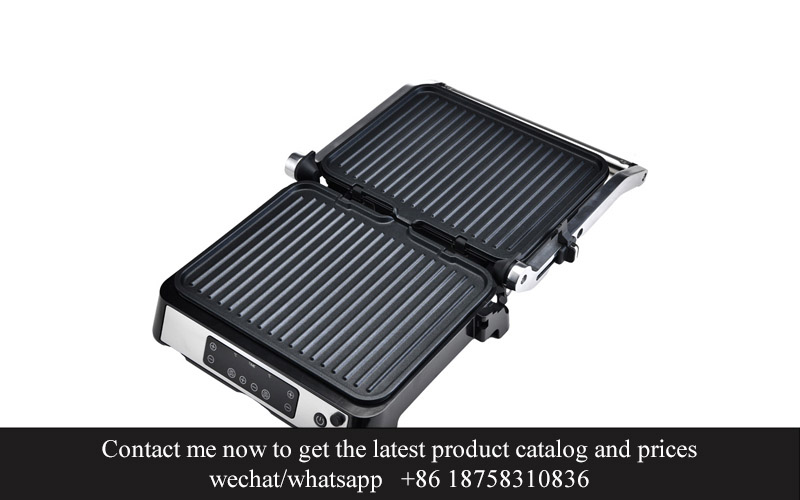
In recent years, the commercial kitchen appliance market has witnessed a surge in innovation, with ETL listed units emerging as a game-changer. These appliances, certified by the Electrical Testing Laboratories (ETL), are not just products; they are the backbone of modern commercial kitchens. Let’s delve into why these units are making waves in the industry.
ETL certification is a mark of quality and safety that ensures these appliances meet stringent safety standards. It’s a stamp of approval that tells operators they’re investing in reliability. From high-powered ranges to energy-efficient dishwashers, ETL listed units are designed to withstand the rigorous demands of commercial kitchens.
One of the key aspects of ETL listed units is their durability. They are built to last, with robust construction and materials that can handle constant use without failing. This durability translates into reduced downtime for restaurants and other commercial establishments, which is crucial for maintaining smooth operations.
Energy efficiency has become a major focus in the commercial kitchen appliance market. ETL listed units are leading the charge by incorporating advanced technologies that minimize energy consumption. This not only helps businesses cut down on utility bills but also contributes to a greener, more sustainable environment.
The integration of smart technology is another trend that’s reshaping the commercial kitchen appliance market. ETL listed units often come with features like remote monitoring, predictive maintenance, and automated controls. These innovations allow kitchen managers to optimize their operations, streamline workflows, and reduce waste.
Customization is also a key factor in the commercial kitchen appliance market. ETL listed units are available in a variety of sizes, configurations, and power levels to meet the unique needs of different kitchen environments. Whether it’s a bustling restaurant or a busy café, these appliances can be tailored to fit the space and requirements.
Safety is paramount in commercial kitchens, and ETL listed units are designed with this in mind. They undergo rigorous testing to ensure they meet or exceed safety standards, including electrical, mechanical, and fire safety. This peace of mind is invaluable for kitchen managers who are responsible for the well-being of their staff and customers.
Innovation isn’t just about the latest technology; it’s also about how appliances are designed to be user-friendly. ETL listed units often feature intuitive interfaces, easy-to-clean surfaces, and ergonomic designs that make them a pleasure to use. This not only enhances the working experience but also contributes to a more productive kitchen environment.
Another significant trend is the integration of kitchen appliances with food safety protocols. ETL listed units are often equipped with features that help prevent cross-contamination and maintain food safety, such as stainless steel construction and easy-to-sanitize components.
The commercial kitchen appliance market is also seeing a rise in eco-friendly appliances. ETL listed units that are made from sustainable materials and have a lower carbon footprint are becoming increasingly popular. This shift towards sustainability is not only good for the environment but also aligns with the values of many consumers and businesses today.
The versatility of ETL listed units is another reason they are becoming a game-changer in commercial kitchens. From countertop appliances to full-sized equipment, these units can be found in various forms to cater to different kitchen applications. This versatility ensures that no matter the size or type of commercial kitchen, there’s an ETL listed unit that can meet the needs.
The rise of ETL listed units is also a testament to the evolving role of the commercial kitchen. As the food industry continues to grow and change, so does the technology and equipment that powers these kitchens. ETL listed units are at the forefront of this evolution, providing the tools necessary for kitchens to adapt and thrive.
Lastly, the global nature of the food industry has brought about a demand for appliances that can handle diverse cooking styles and ingredients. ETL listed units, with their wide range of features and configurations, are well-suited to meet these international demands, making them a preferred choice for kitchens around the world.
In conclusion, ETL listed units are revolutionizing the commercial kitchen appliance market. Their focus on safety, efficiency, innovation, and customization is reshaping how kitchens operate and ensuring that they can meet the demands of the modern foodservice industry. As these units continue to evolve, they will undoubtedly play a pivotal role in shaping the future of commercial kitchens worldwide.

In today’s fast-paced culinary landscape, consumer benefits and industry advancements are inextricably linked, driving innovation and enhancing the overall experience in the kitchen. From user-friendly designs to sustainable technologies, the kitchen appliance market is continually evolving to cater to the changing needs and preferences of consumers.
Smart Connectivity is Revolutionizing ConvenienceThe integration of smart technology in kitchen appliances has transformed the way we interact with our cooking tools. With features like remote control and voice-activated commands, appliances like refrigerators and ovens have become more intuitive and accessible. Users can now monitor and manage their appliances from their smartphones, ensuring optimal performance and convenience.
Energy Efficiency is at the CoreEnergy-conscious consumers are increasingly seeking appliances that are not only powerful but also energy-efficient. Advancements in insulation, motor technology, and energy-saving modes have led to significant improvements in appliance performance. This shift towards energy-efficient models not only reduces utility bills but also minimizes the environmental footprint of commercial kitchens.
Sustainability Gaining TractionThe growing awareness of environmental issues has prompted the appliance industry to focus on sustainability. Appliances made from recycled materials, with eco-friendly designs that minimize waste, are becoming more prevalent. Features like programmable settings to reduce standby power consumption and water-saving capabilities are not just selling points but also reflect a broader commitment to the planet.
Ease of Use is KeyModern appliances are not just about power and efficiency; they’re also designed with user experience in mind. From touchscreens to intuitive control panels, the emphasis is on making appliances as easy to use as possible. Ergonomic designs and user-friendly interfaces ensure that both professionals and home cooks can operate appliances effortlessly, reducing stress and enhancing productivity.
Personalization and CustomizationConsumers are no longer satisfied with one-size-fits-all solutions. Appliance manufacturers are responding by offering a wider range of products that can be tailored to individual preferences and specific kitchen layouts. Whether it’s the size, color, or specific features, consumers can now find appliances that fit their unique needs and aesthetics.
Safety Features are Non-NegotiableWith the increased awareness of kitchen safety, appliance manufacturers are placing a strong emphasis on safety features. Features like child locks, anti-clog filters, and automatic shut-offs in ovens and cooktops are becoming standard. These enhancements not only protect users but also contribute to the longevity of the appliances.
Healthy Cooking OptionsThe rise of health-consciousness has led to a demand for appliances that promote healthy cooking. Appliances with features like non-stick surfaces, air fryers, and steam ovens are becoming more popular. They allow for cooking with less oil and fat, which is a healthier alternative for those looking to maintain a balanced diet.
Innovation in CleaningCleaning appliances can be a hassle, but new innovations are making the task easier and more efficient. Self-cleaning ovens, programmable dishwashers with sanitizing cycles, and appliances with easy-to-clean surfaces are all designed to reduce the time and effort spent on post-cooking maintenance.
Enhanced Cooking CapabilitiesThe evolution of appliances has not only improved the efficiency of cooking but has also expanded the culinary possibilities. Multifunctional cooktops, pressure cookers with programmable settings, and high-tech grills are allowing users to experiment with new recipes and cooking techniques. This level of versatility empowers chefs and home cooks alike to push the boundaries of traditional cooking.
Custom Integration for Integrated KitchensIntegrated kitchens, where appliances blend seamlessly with the kitchen cabinetry, are becoming more popular. Customizable appliances with concealed handles and sleek designs are not just about aesthetics; they also offer practical solutions for smaller kitchens and open-concept living spaces.
Continuous Improvement and AdaptationThe kitchen appliance market is dynamic, with continuous improvement and adaptation driven by consumer feedback and technological advancements. Companies are committed to staying ahead of the curve, introducing new features and improving existing ones to keep pace with the evolving demands of the market.
The appliance industry’s focus on consumer benefits and industry advancements is a testament to its responsiveness to market needs. As consumers seek out appliances that are not just powerful but also convenient, efficient, and sustainable, the industry is rising to the challenge, delivering products that enrich the culinary experience.
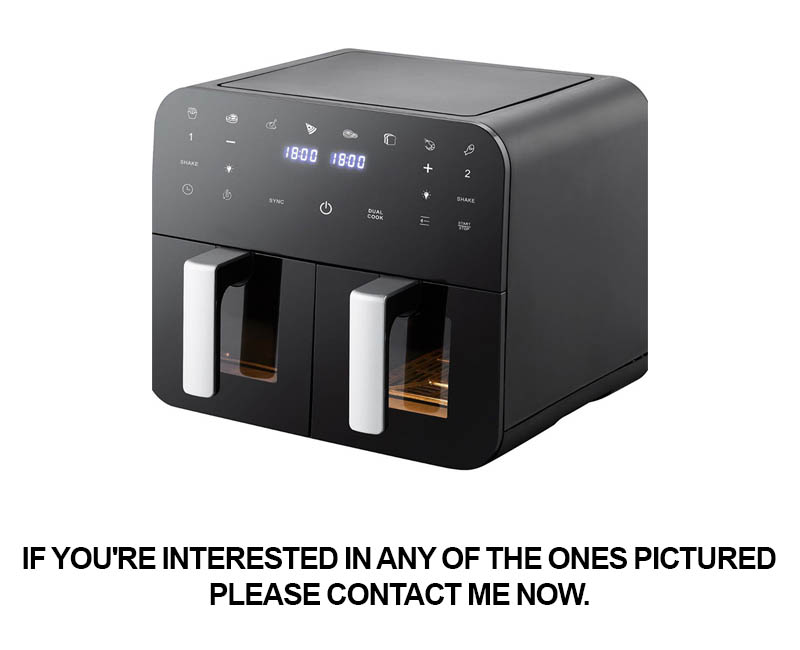
In recent years, the adoption of ETL (Electrical Testing Laboratory) listed commercial kitchen units has transformed the landscape of commercial kitchens. These units have not only set new standards in safety and efficiency but have also brought a multitude of benefits to both businesses and consumers. Let’s delve into some case studies that showcase the successful implementations of ETL commercial units.
The restaurant “Bistro Bliss” in downtown Chicago made a strategic move to upgrade their kitchen equipment. After thorough research and consultations with industry experts, they chose ETL listed commercial units for their durability and compliance with safety regulations. The transition was seamless, and the results were remarkable. Not only did the new equipment improve the overall efficiency of their kitchen operations, but it also enhanced the safety of their staff and customers.
Another prime example is “Oceanic Delights,” a seafood restaurant located by the coast. The owners were looking to elevate their culinary offerings and streamline their kitchen processes. They decided on ETL listed commercial ranges, fryers, and dishwashers. The investment paid off, as the equipment not only increased their output but also reduced maintenance costs. The restaurant’s chefs now have access to precise cooking temperatures and consistent performance, ensuring that each dish is cooked to perfection.
In the fast-food industry, “Quick Bite” fast-food chain faced challenges with their outdated kitchen appliances. The frequent breakdowns and inefficient operations were costing the company valuable time and money. They decided to replace their equipment with ETL listed commercial units. The new ovens, grills, and coolers were designed with the latest technology, providing faster cooking times and better energy efficiency. As a result, “Quick Bite” saw an improvement in their service speed, food quality, and overall customer satisfaction.
The “Green Cuisine” organic cafe in a small town took a different approach by integrating sustainable practices into their kitchen. They selected ETL listed commercial units that were energy-efficient and had a smaller carbon footprint. The investment was substantial, but the benefits were clear. The cafe not only became a beacon for environmental responsibility in their community but also saved on energy costs over time. The eco-friendly appliances also contributed to a healthier work environment, as they produced less heat and.
In the hospitality sector, “Lakeside Hotel” underwent a major renovation, and the kitchen was at the heart of this transformation. They replaced their entire kitchen suite with ETL listed commercial units, including ranges, hoods, and exhaust systems. The new equipment not only met stringent safety standards but also enhanced the aesthetic appeal of the kitchen. Guests were wowed by the hotel’s commitment to quality and innovation, and the hotel’s staff enjoyed working in a well-equipped, modern kitchen.
A bakery chain known for its exquisite pastries faced quality control issues due to inconsistent baking temperatures. By switching to ETL listed commercial ovens, the bakery was able to achieve precise and uniform heat distribution. This resulted in a significant increase in the quality of their baked goods, leading to higher customer satisfaction and a surge in sales.
“City Bites,” a bustling food court in a busy mall, had to address the challenge of managing multiple food vendors with varying cooking times and requirements. They introduced a range of ETL listed commercial appliances that were versatile and could accommodate different cooking methods. This diversity in equipment allowed the food court to offer a wider variety of cuisine options, thus attracting a more diverse clientele.
In conclusion, the successful implementations of ETL commercial units across various industries demonstrate the transformative impact they can have on kitchen operations. From improved safety and efficiency to enhanced customer satisfaction and environmental sustainability, these units have become a game-changer for commercial kitchens everywhere.
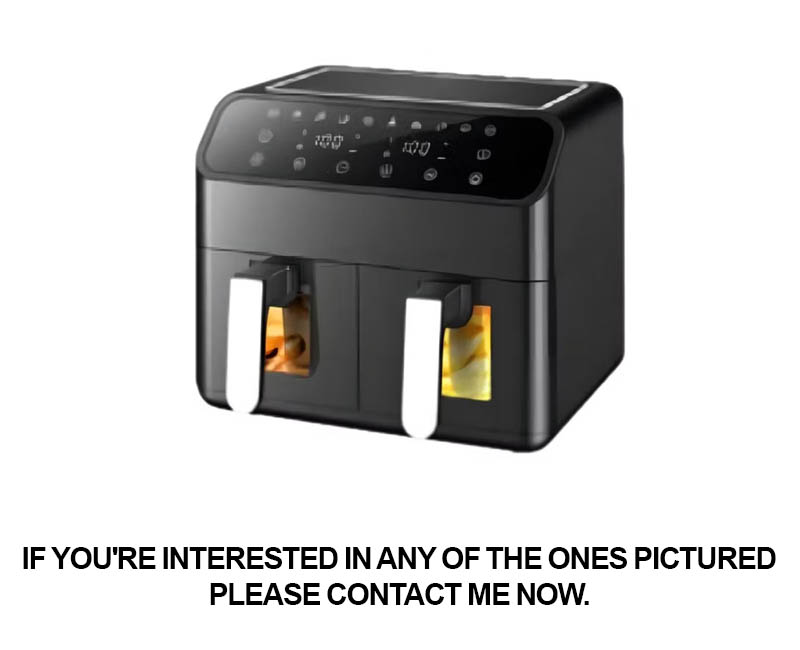
In the bustling world of kitchen appliances, competition is fierce, with brands vying for a piece of the market. Navigating this competitive landscape requires a strategic approach, innovative products, and a keen understanding of consumer needs. Here’s a closer look at the key elements shaping the competitive environment:
Brands are increasingly focusing on sustainability, and this is reflected in the design and production of kitchen appliances. Eco-friendly features, such as energy-efficient motors and recyclable materials, are becoming standard, giving consumers a greener option without compromising on performance.
The integration of smart technology has revolutionized the kitchen appliance market. From smart ovens that can be controlled via a smartphone to refrigerators that can monitor food spoilage, these innovations not only enhance convenience but also cater to the tech-savvy consumer.
Customization is another area where brands are differentiating themselves. Offering a range of finishes, sizes, and functionalities allows customers to choose appliances that perfectly match their kitchen decor and cooking habits. This personal touch can make a significant impact on brand loyalty.
The rise of online marketplaces has changed how consumers shop for kitchen appliances. Brands that have mastered e-commerce strategies are reaping the rewards, as they tap into a broader customer base and benefit from lower overhead costs compared to brick-and-mortar stores.
Marketing and branding play a crucial role in the competitive landscape. Brands that tell compelling stories and connect with their audience on an emotional level are more likely to stand out. Influencer partnerships, engaging social media campaigns, and memorable advertising campaigns are all part of the strategy.
Customer service and support are often the deciding factor in a competitive market. Brands that offer exceptional post-purchase service, including warranty coverage, repair services, and easy-to-access customer support, are likely to retain customers and gain a positive reputation.
The global kitchen appliance market is influenced by regulatory changes and trade policies. Brands must stay informed about these shifts and adapt their offerings accordingly. Compliance with international standards and regulations is not only a legal requirement but also a trust signal to consumers.
Innovation in materials and manufacturing processes is constantly pushing the boundaries of what’s possible in kitchen appliances. From the use of advanced metals for durability to the integration of nanotechnology for better hygiene, these advancements are changing the game.
The rise of health-conscious consumers has led to a surge in demand for kitchen appliances that promote healthy cooking. Induction cooktops, air fryers, and steam ovens are becoming more popular as they offer healthier alternatives to traditional cooking methods.
The importance of brand partnerships cannot be overstated. Collaborations with kitchen designers, chefs, and influencers can help brands reach new audiences and gain credibility. These partnerships often lead to co-branded products that resonate with consumers looking for a seamless kitchen experience.
Lastly, the competitive landscape is dynamic, with new entrants and evolving consumer preferences. Brands must be agile and ready to pivot their strategies in response to these changes. Continuous innovation, a focus on customer satisfaction, and a commitment to quality are the cornerstones of success in this ever-evolving market.

The landscape of commercial kitchen appliances is rapidly evolving, with ETL listed units playing a pivotal role in shaping the future. These units are not just about compliance; they represent a leap forward in technology, efficiency, and user experience. As we look ahead, several factors are poised to redefine what’s next for ETL listed commercial units.
In the realm of energy efficiency, advancements are pushing the boundaries of what’s possible. Smart appliances that learn and adapt to usage patterns are becoming more common, reducing energy consumption and lowering operational costs. The integration of renewable energy sources, such as solar and wind, into commercial kitchens is also gaining traction, promising a greener and more sustainable future.
The rise of automation is another significant trend. From automated dishwashing systems to robotic cooking stations, the commercial kitchen of the future will rely less on human labor and more on sophisticated machinery. ETL listed units are likely to include cutting-edge automation features that streamline operations and enhance productivity.
Food safety remains a top priority, and ETL certification is a key factor in ensuring that commercial kitchens meet stringent hygiene standards. Innovations in sanitizing technology, such as UV light disinfection and antimicrobial coatings, are being incorporated into ETL listed appliances to prevent cross-contamination and maintain a clean environment.
Customization is becoming increasingly important in the commercial kitchen market. ETL listed units are being designed with modular components that allow for easy upgrades and modifications to suit the specific needs of various establishments. This flexibility ensures that kitchens can evolve along with the changing demands of the foodservice industry.
The Internet of Things (IoT) is also expected to play a significant role in the future of ETL listed commercial units. Appliances that can communicate with each other and with the kitchen management system offer real-time data on performance, inventory, and maintenance needs. This connectivity can lead to predictive maintenance, reducing downtime and improving overall kitchen efficiency.
In the realm of user experience, ETL listed units are focusing on intuitive interfaces and ergonomics. Touchscreen controls, voice-activated commands, and ergonomic designs are becoming standard features, making it easier for kitchen staff to operate appliances safely and efficiently.
Sustainability is a driving force behind the development of ETL listed commercial units. With a growing awareness of environmental impact, manufacturers are focusing on using recycled materials, reducing waste, and ensuring that appliances have a long service life. This not only benefits the environment but also the wallet of the business owner.
Globalization is another factor influencing the future of ETL listed units. As the world becomes more interconnected, there is a demand for appliances that can handle diverse cooking styles and ingredients. ETL listed units are being engineered to accommodate a wide range of culinary traditions, from traditional to fusion cooking.
The integration of technology into kitchen appliances is not just about efficiency; it’s also about convenience. ETL listed units are expected to include features like remote monitoring and control, allowing kitchen managers to oversee operations from anywhere. This level of connectivity ensures that the kitchen runs smoothly, even when the staff is off-site.
In terms of health and wellness, there’s a growing interest in appliances that support healthy cooking methods. ETL listed units are likely to include features that promote low-fat, low-sodium, and low-cholesterol cooking, catering to the health-conscious consumer.
Lastly, the future of ETL listed commercial units is about adaptability. As the foodservice industry continues to evolve, appliances must be designed to handle new cooking techniques and ingredient trends. This means that manufacturers will need to stay agile, continuously innovating and updating their product lines to meet the dynamic needs of the market.
In conclusion, the future of ETL listed commercial units is bright and filled with possibilities. From energy efficiency and automation to health and sustainability, these units are set to revolutionize the way we think about commercial kitchens. As technology advances and consumer expectations grow, ETL listed units will undoubtedly continue to be at the forefront of the commercial kitchen appliance market.
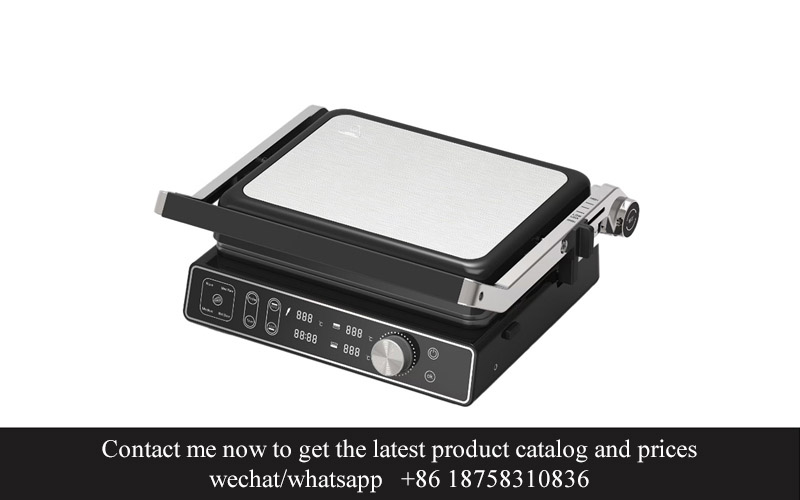
In the ever-evolving landscape of the kitchen industry, ETL certified appliances have emerged as a beacon of quality and reliability. These units, with their stringent compliance to safety standards, have left a lasting impact on how kitchens are equipped and operated. Let’s delve into the transformative effects these appliances have had on the industry.
The integration of ETL listed commercial units has significantly raised the bar for safety and performance in commercial kitchens. These appliances are not just tools for cooking; they are gatekeepers of safety, ensuring that establishments adhere to the highest standards of operation. The trust that comes with the ETL mark has become a cornerstone for many businesses looking to enhance their operational integrity.
One of the most notable impacts of ETL certified appliances is the shift towards energy efficiency. As environmental concerns grow, commercial kitchens are under increasing pressure to reduce their carbon footprint. ETL listed appliances are often designed with eco-friendly features, such as energy-saving modes and recyclable materials, which not only help businesses comply with sustainability initiatives but also save on operational costs in the long run.
The user experience has also been revolutionized by ETL appliances. With intuitive interfaces and ergonomic designs, these units make kitchen operations more efficient and less labor-intensive. Operators can now spend less time on maintenance and more time focusing on the culinary aspects of their work. This shift has not only improved productivity but has also attracted a new generation of chefs who value technology and innovation in their workspaces.
The rise of ETL listed commercial units has also spurred a wave of innovation in the kitchen appliance industry. Manufacturers are constantly pushing the boundaries of what is possible, introducing features like smart connectivity and remote monitoring. This technological integration allows for real-time data analysis, predictive maintenance, and even automated operations, transforming the kitchen into a high-tech environment that is both efficient and responsive to the needs of modern chefs.
In terms of market dynamics, the presence of ETL listed appliances has created a competitive edge for businesses that invest in these units. Consumers, whether they are restaurateurs or busy chefs, are increasingly looking for appliances that not only perform well but also offer peace of mind through compliance with recognized safety standards. This demand has prompted a ripple effect, with manufacturers stepping up their game to meet these expectations.
Case studies have shown that the adoption of ETL commercial units can lead to a significant return on investment. For instance, a restaurant that upgraded its kitchen with ETL appliances reported a reduction in downtime due to equipment failures and a corresponding increase in customer satisfaction. The reliability of these units has also extended the lifespan of kitchen equipment, further reducing the total cost of ownership.
The industry has also seen advancements in terms of customization and modular design. ETL listed commercial units are now available in a variety of configurations, allowing kitchens to be tailored to specific needs and layouts. This flexibility has opened up new possibilities for creative kitchen design and has enabled businesses to optimize their space for maximum efficiency.
As the kitchen industry continues to evolve, the role of ETL listed appliances is likely to become even more integral. The demand for these units is expected to grow as more businesses recognize the value of safety, efficiency, and innovation. The future holds promise for further advancements in technology, with appliances becoming even more intelligent and adaptable to the dynamic needs of commercial kitchens.
In conclusion, the impact of ETL certified appliances on the kitchen industry is profound. They have raised safety standards, driven innovation, and enhanced the operational experience for both chefs and restaurant owners. As the industry continues to embrace these units, the future looks bright, with a kitchen landscape that is safer, more efficient, and technologically advanced than ever before.